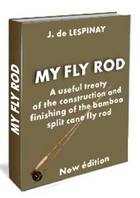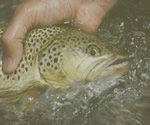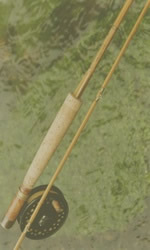Bamboo Fly Rod Building
EXCERPTS CHAPTER I
CHOICE OF THE BAMBOO CULM
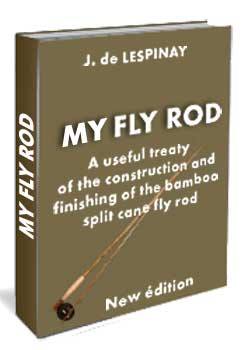
HOW TO BUILD A BAMBOO
FLYROD YOURSELF
Over the years, many different woods and bamboos have been used as material for making flyrods.
Over one thousand species of bamboo have been identified but only one, a cultivated variety known as "Tonkin Cane,... ''(...)
Everett GARRISON & Hoagy B. CARMICHAEL
Reading the Master's Guide of Garrison and Carmichael from which we extracted this excerpt, gives us interesting information about the planting and cultivation of Tonkin Cane.
This includes … (...)
CANE SELECTION CRITERIA
Properties
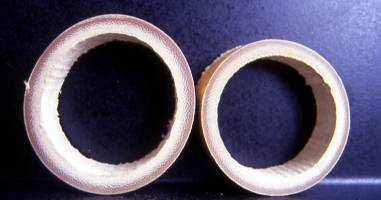
1.1.1 Bamboo culm transverse sections.
On the left, the thickness is very good,
although being sufficient on the right.
The bamboo we use for fly rod making is always "Tonkin Cane" and we must always check the culms for hidden faults notwithstanding the care taken by the suppliers. From one end … (…)
The criteria would be to get a section having the maximum external concentrated primary fibres with the maximum thickness possible.
Flaming
You can use a brine made with coarse salt on the grain on the bamboo, masking the places you wish to avoid flaming. Alternatively, splashing the culm with droplets of plain water is as efficient when it comes to the result. This works on the principle that wherever a water drop is to be found, …(…)
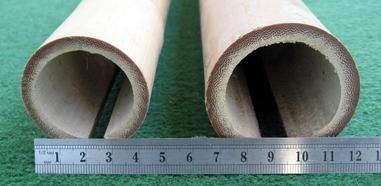
1.1.2 Another transverse section. Thickness on the left
is good, very important but still good on the right
(this is the base of the cane). Note that the slot made
before drying is noticeably enlarged..
PREPARING THE CULM
This procedure allowed Garrison to choose the six strips required for a rod section so that they were picked from places equally spaced around the circumference of the culm. Why not? Frankly speaking, I would say ... (...)
(...)
Michel Lévêque, of Bourges (France), had the idea of gluing part of a half round wood rasp to a wooden base with handle. This tool is very useful ... (...)
Defects
We must distinguish between the visual faults and the structural ones, the first being only aesthetically
(…)
STRIP SPLITTING
With the help of an old screwdriver or slim narrow chisel sharpened to a "V" configuration to make a "wedge-chisel" , make incisions by driving it into the bamboo, first … (…)
STRAIGHTENING
I cannot put too much emphasis on the importance of this operation, because ...
A useful tool can be formed from a hard wood board … (...)
STRIP NUMBERING : STAGGERING
As bamboo has neither the same stiffness nor response at the nodes as in between them some makers try to arrange the nodes so that they will not be situated adjacent to each other …
(...)
Bamboo fly rod building ©2010
